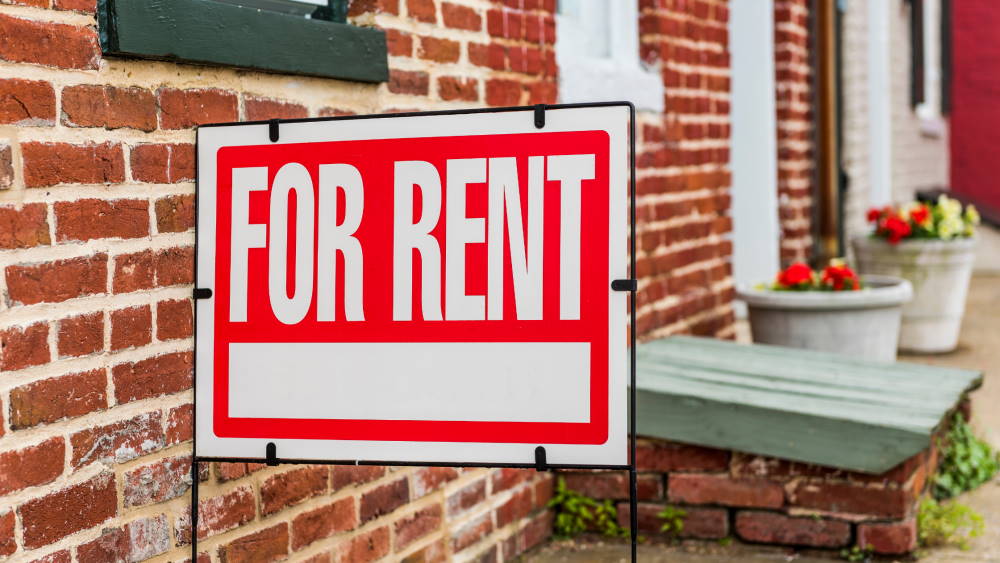Shopping for an investment property is exciting and overwhelming at the same time. In a buyer’s market, you have a lot of choices. Besides the home’s layout and style, you should look at the financial factors to determine if it will ultimately be a good investment.
One of the most important factors is the gross rent multiplier. Think of it as your ‘break-even point’ or the time it takes to earn back what you invested in the property. The GRM creates an ‘apples to apples’ comparison when looking at other investment properties on the market.
Table of Contents
What Is Gross Rent Multiplier?
The gross rent multiplier uses the property’s gross rental income compared to its price. The Formula is simple:
Gross Rent Multiplier Formula
Gross Rent Multiplier = Property Price / Gross Annual Rent
Gross Rent Multiplier Example
The GRM calculation tells you how many years (or months) it takes to earn back what you invested.
Here’s an example:
Let’s say you bought a rental property for $250,000 and can charge $2,500 in rent or $30,000 annually. It would take you 8.33 years to earn back the cost of the home. In other words, you must collect rent for 100 months or 8.33 years to pay off the home.
What the GRM does is level the playing field, though. Let’s say another investment property interests you and it costs $200,000. It sounds like a better deal, right? Let’s look at the GRM.
Let’s say you could collect $1,500 rent on this property. Your GRM would be:
$200,000/$18,000 = 11.1 years or 133 months.
Property B
- Property Price: $250,000
- Gross Annual Rent: $2,500 * 12
- GRM = $250,000 / $30,000
- GRM = 8.33 Years
Property B
- Property Price: $200,000
- Gross Annual Rent: $1,500 * 12
- GRM = $200,000 / $18,000
- GRM = 11.1 Years
In this example, you can see that the more expensive home has a lower GRM and is a better deal from that perspective. You would be able to pay off the $250,000 3 years faster in this particular example.
What Is A Good Gross Rent Multiplier?
For most rental property investors, a good GRM ranges from 4 to 7, but this can change according to the market and the property type.
The lower the GRM, the faster you pay off the property, while the higher the GRM, the longer it takes to pay off the property, using rental income.
On average, aim for a GRM of 4 to 7. That’s the ideal number. Some investors may prefer a higher or lower Gross Rent Multiplier as a personal preference. In the end, it’s how long you can wait to pay the property off in full. The quicker you do, the more profits you make.
There’s a twist, though. A low GRM doesn’t automatically mean it’s a great investment. You could find a property priced ridiculously low and think your 2.5 GRM means it’s a great deal, hands down.
Look at the rental property closely. Consider the cost of renovations and/or repairs. Is it run down and in desperate need of an overhaul? This increases the property’s cost. Try comparing similar properties when using the GRM comparison. If you’re buying fixer-uppers, look at homes that require around the same amount of work or at least the same cost. If you’re buying move-in ready homes, look for those that require minimal (or no) work.
Should You Use Gross Rent Multiplier?
Each investor vets a property differently, but let’s look at the pros and cons of using the GRM.
Pros:
- Anyone can calculate a GRM with two simple numbers.
- It’s easy to figure out the gross rental income by looking at the area’s fair market rent.
- It’s simple to compare properties on equal terms rather than looking at only the price, which isn’t a good indicator of its profitability.
Cons:
- The formula doesn’t consider the operating expenses. Some homes cost more than others to operate, which increases the total cost of owning the home. A property with a lower GRM may have higher operating costs and vice versa.
- It doesn’t take into consideration vacancies or other expenses affecting your net income.
How Calculate Property Price when using the Gross Rent Multiplier Formula
To ensure that you enter the correct property value when using the formula, your best bet is to use recent comparable sold properties (comps). Using comparable property is a tried and trusted method for working out the fair market value of a home.
The underlying goal is to find homes that have extremely similar dimensions, specs and features to the investment property that you are evaluating. For instance, if you are working out the GRM for a 3 bedroom 250 square foot home in West Hartford Connecticut, gaining access to the recently sold price of other 3 bedroom houses with a similar square footage is the best place to start.
One simple way to source comps is with an ARV calculator, while Zillow’s recently sold filter can also be helpful. You can learn about other ways to get comps on a house in this article.
When evaluating rental properties, the Gross Rent Multiplier (GRM) is a fundamental tool that offers a simplified analysis method. By comparing the rental income potential of different properties, it serves as an initial step in your decision-making process. Here’s what you need to know:
Quick and Easy Calculation: The GRM is calculated by dividing the rental property value by its gross rental income:
Application Flexibility: You can use the list price, sale price, or appraised value of the property. Decide whether to work with monthly or annual income figures based on your analysis needs.
Consistency is Key: Ensure that you apply the same metrics across all properties you’re comparing. This consistency is essential for producing accurate data and gaining a clear understanding of each property’s value relative to others.
Incorporating the GRM into your evaluation process allows you to make informed, strategic decisions without the need for a full, costly analysis right away. By blending this approach with accurate property value assessments from comps, you’re better positioned to gauge potential returns effectively.
Final Thoughts
The gross rent multiplier gives you a good idea of a home’s profitability. It’s not the only consideration, but on the surface level, it tells you whether a home is worth buying or not.
Since you only need the property’s purchase price and fair market value rent, it’s easy enough to figure out the GRM quickly. If a home has a GRM that exceeds your threshold, you know to move onto the next property. If it falls within your range, it’s worth spending time determining other factors about the home including its operating expenses, potential vacancies, and the overall profits.
Look at the big picture when choosing the right investment property. Ignoring the gross rent multiplier could mean the difference between buying a profitable investment and losing your shirt on an investment.
Frequently Asked Questions
What's the difference between Gross Rent Multiplier and Net Operating Income?
- GRM = Property Price / Gross Annual Rent
- Net Operating Income = Gross Operating Income – Operating Expenses
Although both of these formulas can be used to assess how profitable a potential investment property may be, they serve two different purpose. Net Operating Income is ultimately focused on the cash flow status of a rental property. GRM tells you how long it will take to pay back the cost of the property, based on gross annual rent.
Does the GRM formula work for commercial property as well?
In short, yes. The GRM formula works for commercial property and residential property. The only caveat is that is that the GRM result will typically be higher when evaluating commercial real estate, meaning that commercial properties tend to take longer to pay off.
Gross Rent Multiplier vs. Gross Income Multiplier - What's The Difference?
When evaluating potential real estate investments, it’s crucial to differentiate between the Gross Rent Multiplier (GRM) and the Gross Income Multiplier (GIM). Though both are valuable for assessing property performance, they offer distinct insights.
Gross Rent Multiplier (GRM)
- Definition: GRM focuses solely on rental income. It’s calculated by dividing the property’s purchase price by its annual rental income.
- Purpose: This metric provides a quick, straightforward way to compare similar rental properties. It suits investors primarily interested in rental income.
- Calculation Example: If a property’s annual rent is $100,000 and it sells for $1,000,000, the GRM would be 10 ($1,000,000 ÷ $100,000).
Gross Income Multiplier (GIM)
- Definition: GIM considers all potential income the property could generate, not just rent. This includes additional income streams like vending machines, parking fees, or advertising spaces such as billboards.
- Purpose: It’s a more comprehensive tool for evaluating a property’s total earning potential, making it valuable for properties with diverse income sources.
- Calculation Example: If the same property generates an additional $20,000 from other income streams, for a total of $120,000, with the same purchase price, the GIM would be 8.33 ($1,000,000 ÷ $120,000).



